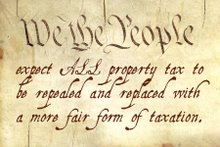(Crawfordsville, IN)- One of the current 'stimulus' spending targets is high-speed passenger rail service, and as a railfan, it caught my attention that one corridor singled out for attention is Cincinnati to Chicago, through Indianapolis. From an Indy Star report:
The administration identified the corridor linking Chicago, Indianapolis and Cincinnati as one of 10 where the president wants to see efficient train service zipping along at 79 mph to 150 mph.
Dennis Hodges of the Indiana High Speed Rail Association said passenger routes from Indianapolis to Cincinnati and Chicago now run at about 45 mph; upgraded tracks and trains would raise that speed to 110 mph.
Crawfordsville in on that current route. Amtrak currently serves this run, so I thought it might be meaningful to look at its' current standing. From Amtrak's website:
One can currently commute from Crawfordsville on Amtrak's Cardinal #51 train. It departs Crawfordsville at 7:28am, and arrives in Chicago at 10:35am, all times local. The cost is $19 for a regular coach seat. Coming home, Hoosier State #850 departs Chicago at 5:45pm and returns to Crawfordsville at 10:35pm. The return trip is another $19.
Pretty workable, if you have a late starting work day. It's a long day, but what else would you expect, commuting from 150 or so miles away? These are the only trains that pass through all day, in either direction, so do make sure to be on time!
How many people ride? Hard to say definitively, but here's the evidence I could collect in the late morning:
 Amtrak's current station is the thing that looks like a bus shelter, standing here in front of the old Monon RR station, that is now the home to a massage therapist and other businesses. There is no staff here: No ticket agent, no porter. There isn't even a rest room.
Amtrak's current station is the thing that looks like a bus shelter, standing here in front of the old Monon RR station, that is now the home to a massage therapist and other businesses. There is no staff here: No ticket agent, no porter. There isn't even a rest room. Amtrak's dedicated portion of this parking lot in Crawfordsville has 12 spaces. 5 are occupied by commuters. One is my car.
Amtrak's dedicated portion of this parking lot in Crawfordsville has 12 spaces. 5 are occupied by commuters. One is my car. Who knows? Maybe there is a lot of walk-up ridership. Maybe each vehicle had seven people carpooling. Maybe, though, people choose not to ride.
The National Association of Railroad Passengers has statistics on Amtrak's various routes. According to NARP, 31,099 fares rode the Hoosier State in 2008. See pg 37 of NARP's factsheet. For comparison? According to the most recent (2002) INDOT count, the least travelled part of I-65 north of Indianapolis saw 26,330 vehicles PER DAY.
I know how it goes with these programs: If they had a lot of riders, it would stand as proof of the public's support and therefore the worthiness of public funding. As it shows few riders, it's proof that if only the service were upgraded- made to run faster, in this case- surely more people would ride. No matter what, though, shovel more money at it.
There is no comparing Europe's high-speed rail to American passenger service. I've ridden Spain's AVE train from Madrid to Sevilla, and it's a hoot. It runs at about 180mph. Total trip time is about 2 hours. What makes it different is that the rails are dedicated solely to the AVE train. No slow passenger trains to clog the rails with, and no freight trains.
In the US, and on the former Monon at Crawfordsville, the rails are owned by the freight companies, here, by CSX. Passenger service is second fiddle. The railroads had been trying to rid themselves of passenger service from the 1950s until finally in 1971 Amtrak was formed. Until then, the federal government forbade American railroads from eliminating passenger service, forcing those companies to operate these trains at a loss for years or even decades.
The Administration's plan is to upgrade the rails on existing routes. Well, that's nice. I'm sure the freight railroad will appreciate that gift. But it doesn't change the fact that the freight trains still take priority over passenger trains. Do this math for me: A passenger train capable of 200mph is going to go how fast if trailing a freight train going 35mph?
So, what are we going to do? Kick the freight trains off their own tracks? Build new dedicated corridors? Anybody think that land acquisition through Chicago will be easy or cheap?
Notice, I haven't even begun to talk about the operational subsidies that allow Amtrak to survive. A quick look at Amtrak's balance sheet shows that passenger fares barely cover salaries and benefits to Amtrak employees, and don't even cover bothersome things like train operation (you know, the core of the enterprise), or fuel.
In 2007, Amtrak lost more than a billion dollars. Who ate that? We did. Those of us who don't even ride.
(Originally posted on Kole Hard Facts)




3 comments:
How much do our highways and roads make after spending billions on maintenance?
Our highways and roads could be fully self-sustaining. the technology is there now to have a transponder in every car, like they do on the toll roads in Chicago and other places. No reason we couldn't do that now, with GPS also, leaving us with a roadway network that is solely supported by those who use it. That would be entirely fair. No reason not to do the same with trains.
You should ride then-it's a wonderful trip, but it is always late due to the freight trains always having first dibs on the track. If it were dependably on time, more would ride. 2 months ago, the train from Indy to Chicago was nearly full.
Post a Comment